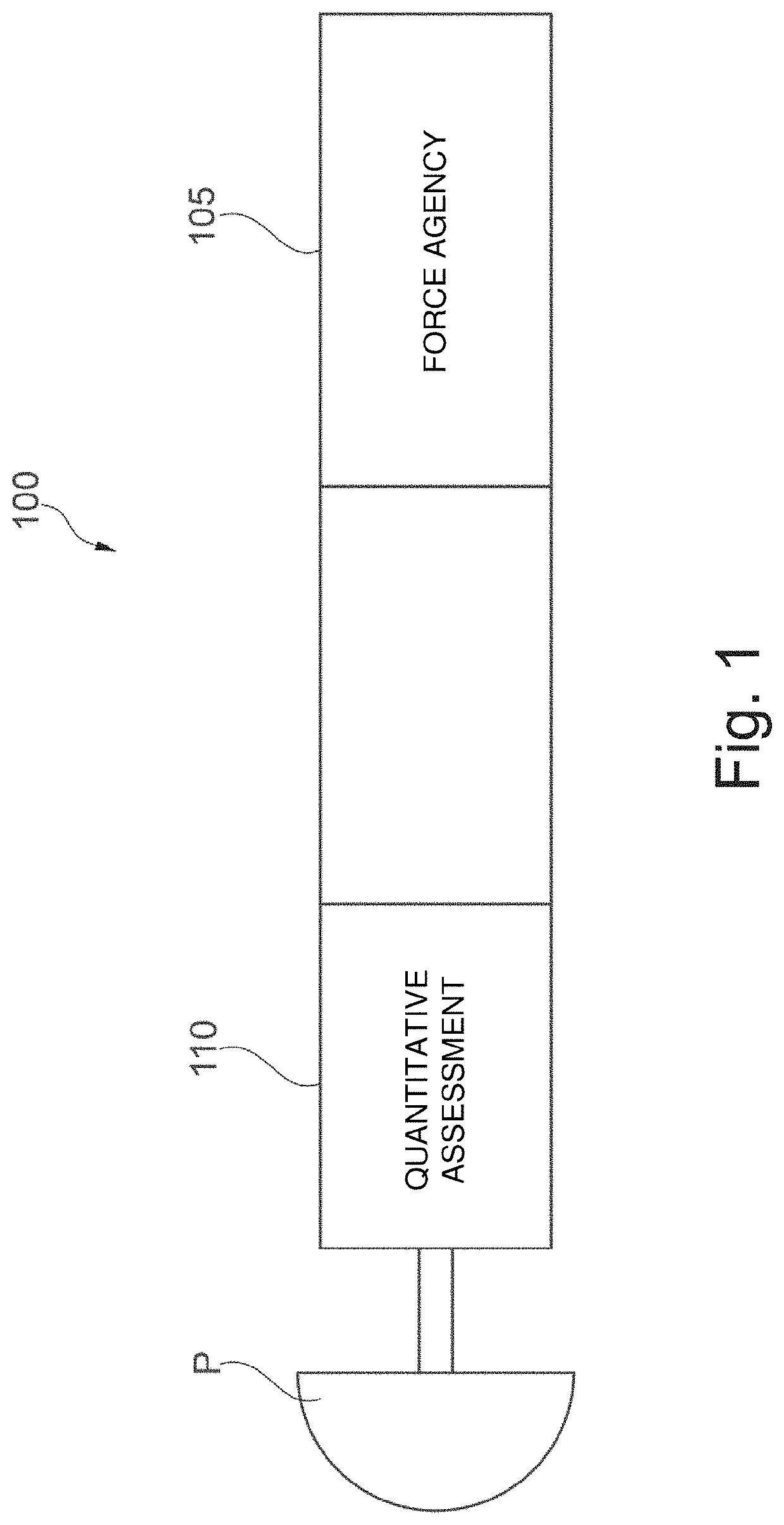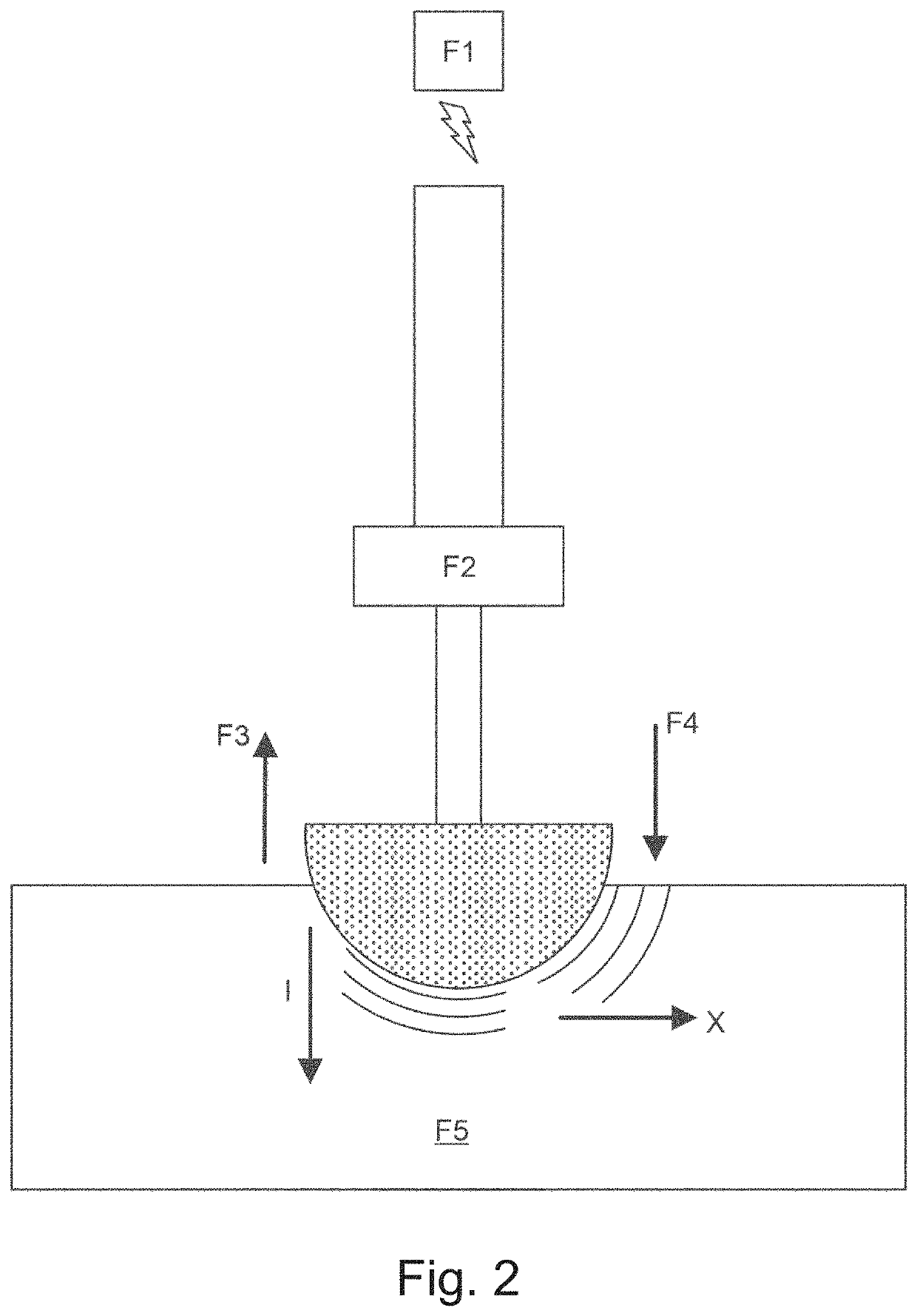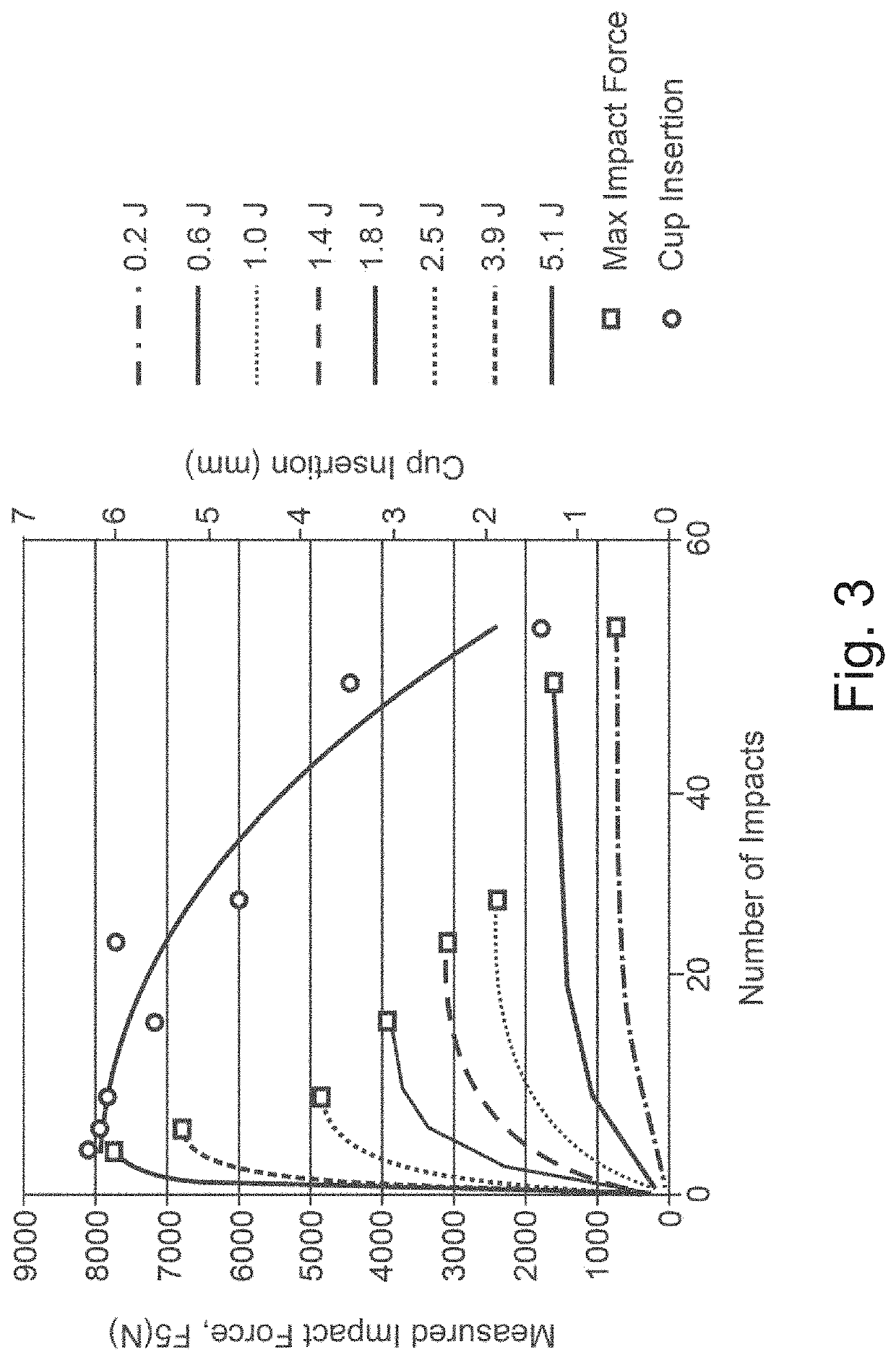Anatomical locator tags and uses
anatomical locator and tag technology, applied in the field of in situ sensing or monitoring, to achieve the effect of improving in situ sensing of components
- Summary
- Abstract
- Description
- Claims
- Application Information
AI Technical Summary
Benefits of technology
Problems solved by technology
Method used
Image
Examples
embodiment 4000
[0455]FIG. 40 illustrates an implementation of force / displacement sensing embodiment 4000 with interference fit fixation for installation of an implant 4005 into a prepared cavity 4010 in a portion of bone 4015. One or more biosensors 4020 may be installed on implant 4005 and / or at an bone / implant interface 4025. Biosensor 4020 may include a force and / or displacement transducer.
[0456]Aseptic Loosening in Orthopedic Arthroplasty
[0457]An electromechanical biosensor incorporated within a prosthesis surface at an anticipated junction of the prosthesis / bone interface can provide information regarding a loose prosthesis that is experiencing micromotion greater than 50 to 150 μm. Motion detectors such as Linear Variable Displacement Transformers LVDT applied permanently at this bone / implant interface may provide immediate PI-POCT diagnostics of a loose prosthesis.
[0458]FIG. 41 illustrates an implementation of an aseptic loosening sensing embodiment 4100, including a biosensor 4105 having a...
embodiment 6000
[0580]FIG. 60 illustrates an embodiment 6000 of a BMD including a pressure sensor 6005 to provide feedback during installation. With respect to management of the force required for some of these tasks, it is noted that with current techniques (the use of the mallet) the surgeon has no indication of how much force is being imparted onto the implant and / or the implant site (e.g., the pelvis). Laboratory tests may be done to estimate what range of force should be utilized in certain age groups (as a rough guide) and then fashioning a device 6000, for example a modified sledgehammer or cockup gun to produce just the right amount of force. Typically the surgeon may use up to 2000 N to 3000 N of force to impact a cup into the acetabular cavity. Also, since some embodiments cannot deliver the force in an incremental fashion as described in association with the BMD3 device, device 6000 includes a stopgap mechanism. Some embodiments of the BMD3 device have already described the application o...
PUM
 Login to View More
Login to View More Abstract
Description
Claims
Application Information
 Login to View More
Login to View More - R&D
- Intellectual Property
- Life Sciences
- Materials
- Tech Scout
- Unparalleled Data Quality
- Higher Quality Content
- 60% Fewer Hallucinations
Browse by: Latest US Patents, China's latest patents, Technical Efficacy Thesaurus, Application Domain, Technology Topic, Popular Technical Reports.
© 2025 PatSnap. All rights reserved.Legal|Privacy policy|Modern Slavery Act Transparency Statement|Sitemap|About US| Contact US: help@patsnap.com



